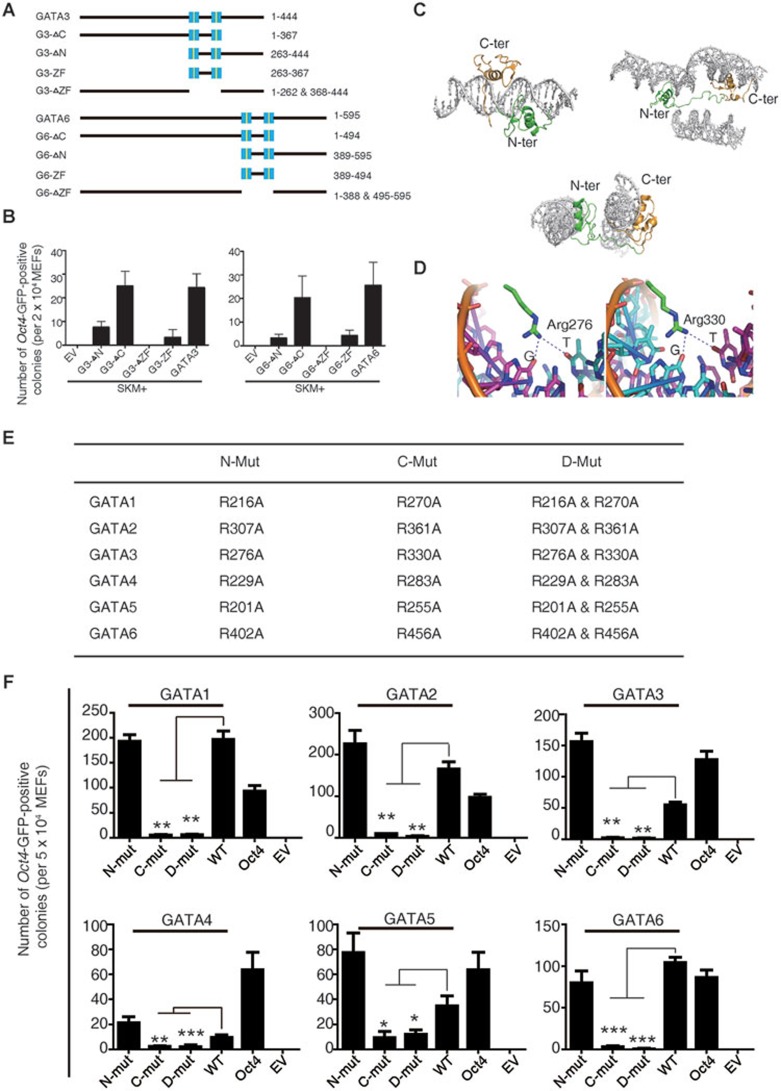Figure 2.
The GATA DNA-binding domain is critical for GATA-mediated pluripotency reprogramming. (A) Schematic diagrams illustrating various GATA3 and GATA6 deletion mutants. Zinc fingers are highlighted in blue squares. (B) The reprogramming assay that determines the abilities of GATA3 and GATA6 deletion mutants to induce pluripotency. The Oct4-GFP colonies were counted at 9 days post induction. Induction with EV plus SKM was used as a negative control. Error bars indicate SD (n = 3). (C) Overall structure of GATA3/DNA complexes16. Three complexes are listed. The N-terminal zinc finger and the linker are colored in green and the C-terminal zinc finger and C-tail are colored in gold. (D) DNA recognition by the GATA3 DNA-binding domain16. Hydrogen-bonding interactions between Arg276 (N-terminal zinc finger), Arg330, and 3 bp (GAT) of the binding site at their major groove core. (E) Mutation strategy of GATA family members. Alanine was used to substitute for Arginine. (F) Reprogramming assay that determines the abilities of the GATA family member zinc-finger mutants to induce pluripotency, including N-terminal zinc-finger mutants (N-mut), C-terminal zinc-finger mutants (C-mut), and double mutants (D-mut). WT represents wild-type GATA family members. The Oct4-GFP colonies were counted at 9 days post induction. Induction with EV plus SKM was used as a negative control. Error bars indicate SD (n = 3).

